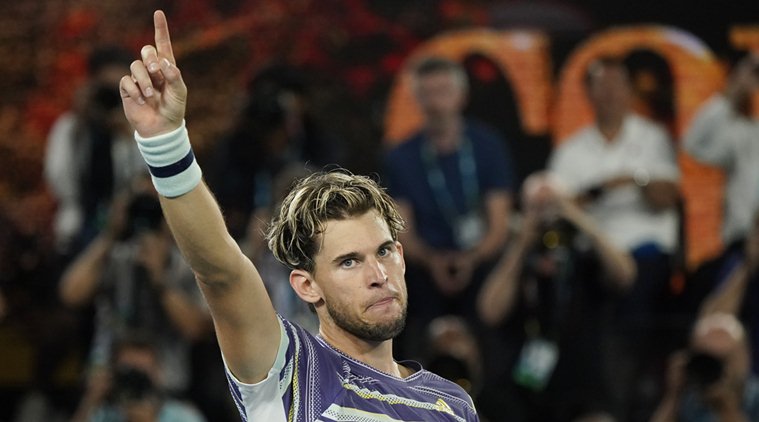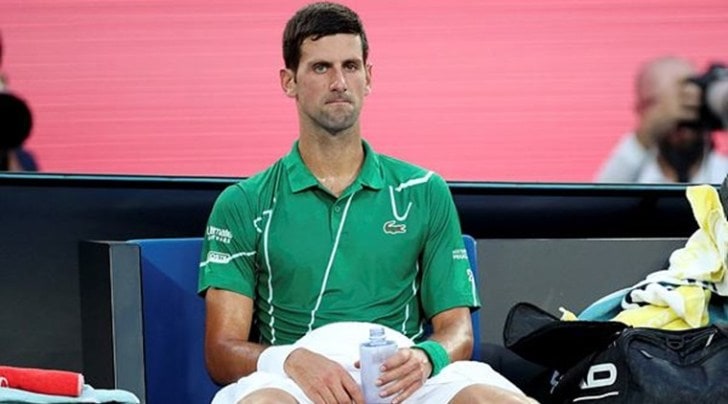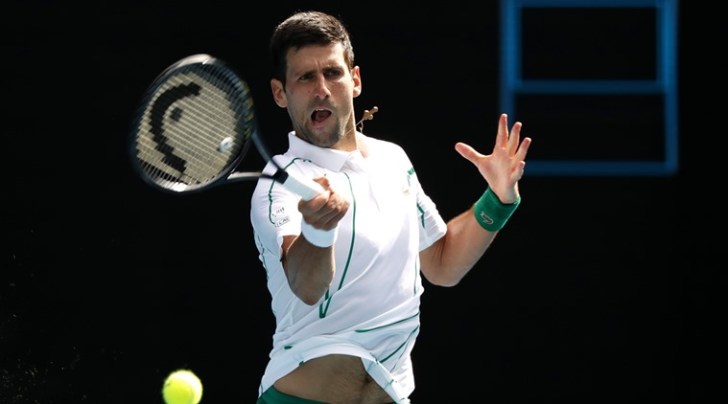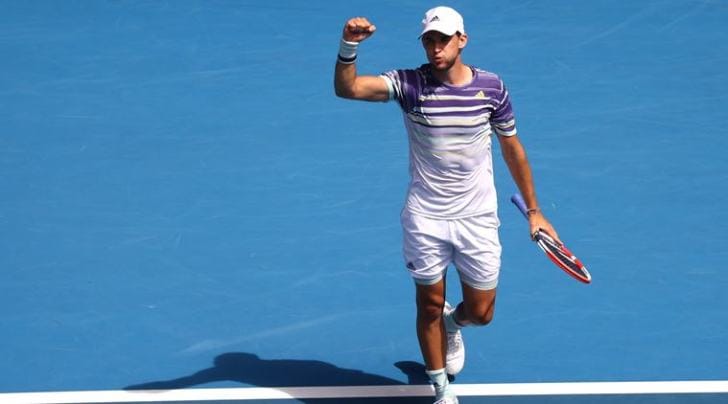 Austria’s Dominic Thiem has improved on hardcourts (Source: Reuters)
Austria’s Dominic Thiem has improved on hardcourts (Source: Reuters)
By Kurt Streeter
The last moments of Dominic Thiem’s stirring win over Alexander Zverev at the Australian Open semifinal were filled not just with brilliance, but promise and possibility.
Watching those points, played under intense pressure with the crowd of 15,000 people at Rod Laver Arena whipped into frenzy, it was indeed very possible to imagine Thiem winning this Grand Slam tournament, even against Novak Djokovic, who has been so dominant in Melbourne — for the past two weeks and the past dozen years.
The semifinal was still up for grabs for both players late in a tiebreaker, with Thiem ahead two sets to one. Then it wasn’t.
On one point, even though he was backpedaling, Thiem nailed a scorching forehand that the 6-foot-6 Zverev could only flail at. On another, Thiem followed his serve with another forehand winner, this time painting the sideline as Zverev admired the shot.
Moments later, on match point, Zverev came to the net and seemed in control. But as he had done all night in this taut affair, Thiem answered perfectly. He hit an arcing lob over his opponent, pushed forward, then clipped off a forehand volley into the open court for the win: 3-6, 6-4, 7-6 (3), 7-6 (4).
 Djokovic, is well-rested, primed, and seemingly unbeatable
Djokovic, is well-rested, primed, and seemingly unbeatable
It took 3 hours 42 minutes, a marathon that featured side-to-side sprinting from beginning to end.
Now comes the hard part.
After two failed attempts on the red clay at the French Open, Thiem, a 26-year-old Austrian, will get another chance to win his first major championship when the men’s final is played on Sunday night.
His opponent, Djokovic, is well-rested, primed, and seemingly unbeatable on Melbourne’s sea blue courts.
To win, Thiem will have to bottle the brilliant grit he showed not just Friday, but in his four-set win over Rafael Nadal in the quarterfinals.
An upset would be monumental.
Djokovic, after all, owns this tournament. He has won seven Australian Open titles, a record in men’s tennis. Last year, he handed Nadal one of the most thorough beatdowns of the Spaniard’s career, controlling play from the first point to the last in a win in straight sets.
Can Dominic Thiem break the Slam barrier or will Novak Djokovic claim his 17th?
Djokovic has said it was the greatest performance in a final he has ever played. “At this level, under these circumstances, it was truly a perfect match,” he said.
There has been nothing different about him this January. Djokovic looks lithe and supremely fit, all recovered from the shoulder injury that forced him to retire during the fourth round of the U.S. Open last September.
The Serbian has been hitting all of his strokes — backhands, forehands, volleys — as solidly as we’ve come to expect over the extraordinary arc of his 16 Grand Slam wins, the last of which came in an epic Wimbledon final in July against Roger Federer that lasted nearly five hours.
 Djokovic looks lithe and supremely fit, all recovered from the shoulder injury (Source: Reuters)
Djokovic looks lithe and supremely fit, all recovered from the shoulder injury (Source: Reuters)
Here, remarkably, he actually seems better. His first serve is going in at roughly 70%, and he has won 80% of those points. It is more than those statistics that point to the unyielding consistency that make Djokovic so dangerous. It is the renewed heft behind his serves. All tournament long, they have sounded different, more resounding, booming across the rafters of the arena.
On Thursday, against Federer in a semifinal, Djokovic found himself behind in the first set. Then he leaned on that serve: A booming ace; a series of slices wide and forceful fastballs. The Serbian was storming back, Federer was on his heels.
It ended as so many Djokovic matches do. He was a runaway train.
Can Thiem stop him?
 Thiem knows how to beat Djokovic — he has done so four times in 10 tries (Source: Reuters)
Thiem knows how to beat Djokovic — he has done so four times in 10 tries (Source: Reuters)
“I have to risk a lot,” said Thiem, alluding to the aggressive way he has to play, same as in those last, heart-pounding moments against Zverev. “I have to go for many shots. At the same time, not too much. That’s a very thin line.”
Thiem did that the last time they played, when he took out Djokovic in a third-set tiebreaker at the ATP Finals in London last November. It followed another win over the Serbian, last summer, during Thiem’s march to the finals at Roland Garros in Paris.
Thiem knows how to beat Djokovic — he has done so four times in 10 tries.
The key is sticking close then prevailing deep into each set, and having deep belief.
That he should have. Not just from his play in Melbourne. Since the French Open finals defeats at the hands of Nadal in 2018 and 2019, Thiem has taken his game to another level.
Also Read | Paes bows out of Australian Open
For most of his career, Thiem was known mostly as a powerful clay courter. But last year he sharpened his game on hardcourts, playing with a well-honed aggression, winning at Indian Wells and making the finals in London. The evolution of his game may well have turned him into what many in tennis had long predicted: the player from his generation most likely to rise through the ranks and challenge the so-called Big Three — Federer, Nadal and Djokovic — the trio of legends now in their 30s, who have kept Thiem and others in their mid- and early-20s from winning even a single major title. The Big Three have won 55 of the last 66 major titles. Men’s tennis has not had a first-time Grand Slam winner since Marin Cilic took the U.S. Open in 2014.
The Serbian knows what he is facing.
Thiem “definitely has the game,” Djokovic said, not long after beating Federer here on Thursday. “He has the experience now. He has the strength. He has all the means to really be there. He has improved in the last 12 months playing on the hardcourt without a doubt, and the results are showing that. It’s just a matter of one match here and there that can potentially give him a Grand Slam title, that he can actually get in the mix of top three in the world.”